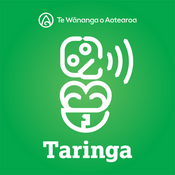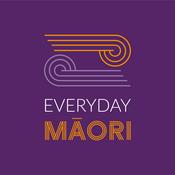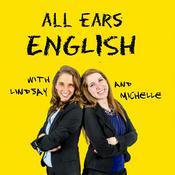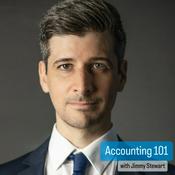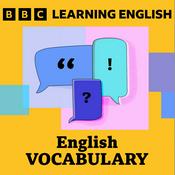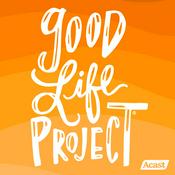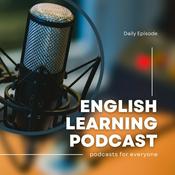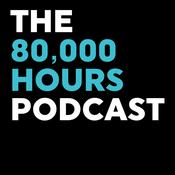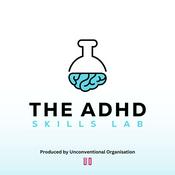Available Episodes
5 of 108
- 2025 High Blood Pressure GuidelineWhat is the new term for hypertensive urgency? When is single-pill combination antihypertensive indicated? Do ACEI/ARB, MRA, and thiazide or potassium-sparing diuretics need to be held for initial testing of primary aldosteronism? In what neurologic condition should systolic BP be acutely lowered to 130-139 mmHg for 7 days, but not lower than 130 mmHg? Does BP control reduce the risk of dementia? In whom is renal denervation indicated and not indicated? Tune in for answers to these questions in this "deep dive" of the 2025 AHA/ACC Guideline for the Prevention, Detection, Evaluation, and Management of High Blood Pressure in Adults.Watch on YouTube: https://www.youtube.com/watch?v=BkObt8kU9EsDifficulty Level: EasyYou are listening to Hu Said: Guideline LifelinePlease subscribe, rate, and support the channel! Ads help keep materials free for everyone.More MedEd resources available at www.rueyhu.comUpdates at Twitter/X: @Ruey_Hu--------48:49
- Special Episode: Music of the Heart: ArrhythmiasCan music help us understand cardiac arrhythmias? 🎵💓 In this special podcast episode, I explore how musical notation can be used to visualize and "hear" ECG rhythms, providing an intuitive and structured approach to learning atrial fibrillation, AV blocks, ventricular tachycardia, and more. By "hearing" arrhythmias and "reading" them in a musical framework, trainees can develop an alternative approach to ECG interpretation, reinforcing pattern recognition through both visual and auditory learning modalities.Musical score published in JACC Clinical Electrophysiology: https://doi.org/10.1016/j.jacep.2025.02.022📖 Musical notation as a novel framework for ECG teaching:🎼 Atrial activity (P waves) = High-pitched chimes🥁 Ventricular beats (QRS complexes) = Low-pitched snare drumNote Durations Reflect Physiological Intervals:🔹 P wave = 32nd note → Approximates a normal PR interval (120-200 ms)🔹 PR prolongation (1° AV block) = 16th note → Reflects delay in AV node conduction🔹 Dropped beats (2° AV block) = Missing notes → Represent non-conducted impulses🔹 Rapid rhythms (VT, SVT) = Increased tempo → Matches clinical tachycardia rates🔹 Irregular rhythms (AFib, MAT) = Variable note spacing → Captures unpredictable R-R intervalsThis lecture is designed for medical students, cardiology fellows, electrophysiologists, and music lovers who want to experience a new way of learning cardiology! I have also provided this talk to JACC: Clinical Electrophysiology as a Supplemental Video. Please see the paper here.Tweetorial: https://x.com/ruey_hu/status/1919074533354656101🔔 Subscribe for more cardiology and medical education content!📢 Leave a comment below: What other arrhythmias can be represented through classical music notation? Let’s discuss!#Cardiology #MedicalEducation #ECG #Arrhythmia #MusicAndMedicine #Electrophysiology #HeartRhythm--------26:36
- 2025 Acute Coronary Syndromes GuidelineShould non-culprit lesions be revascularized in STEMI and NSTEMI? Should revascularization of non-culprit lesions occur in a simultaneous or staged manner? How do these recommendations differ when acute MI presents with cardiogenic shock? When DAPT is reduced to SAPT, which P2Y12 inhibitor is favored for monotherapy? When is de-escalation from ticagrelor/prasugrel to clopidogrel reasonable? In post-PCI patients requiring antithrombotic therapy, what should the duration of triple therapy be, and what is the P2Y12 inhibitor of choice? What is the role of Impella, IABP, and VA-ECMO in ACS with cardiogenic shock? Tune in for answers to these questions in this "deep dive" of the 2025 AHA/ACC Guideline for the Management of Patients with Acute Coronary Syndromes. Bonus – Accompanying YouTube Talk: https://www.youtube.com/watch?v=MccydgyxK_IDifficulty Level: IntermediateYou are listening to Hu Said: Guideline LifelinePlease subscribe, rate, and support the channel! Ads help keep materials free for everyone.More MedEd resources available at www.rueyhu.comUpdates at Twitter/X: @Ruey_Hu--------48:07
- 11.12 Single VentricleIn this episode, we review congenital single ventricle, including physiology, surgical repair, and long-term management. What are the different types of univentricular heart defects, and how do they affect the systemic and pulmonary circulations? What are the three steps of staged surgical repair for single ventricle, and what are the indications for each? What is the difference between classic (unidirectional) Glenn surgery and bidirectional Glenn surgery? What is the difference between classic Fontan surgery, direct RA-to-PA Fontan, lateral tunnel Fontan, and extracardiac Fontan? What are the common post-repair complications, including arrhythmias, Fontan-associated liver disease (FALD), and thrombosis, and how are these complications managed? Tune in for answers to these questions. Difficulty Level: Advanced You are listening to Hu Said: Cardiology Board Review Series (2024-2025 Season) Please subscribe, rate, and support the channel! Ads help keep materials free for everyone. More MedEd resources available at www.rueyhu.com Updates at Twitter/X: @Ruey_Hu--------14:39
- 11.11 Transposition of the Great Arteries and Truncus ArteriosusIn this episode, we review transposition of the great arteries (TGA), including the physiology, imaging, repair strategies, and potential complications. What is the difference between D-TGA (complete TGA) and L-TGA (congenitally corrected TGA), and why are they named D- and L-? How does blood flow through the heart in D-TGA, and why is a shunt necessary for survival? What imaging features help identify what is serving as a right ventricle versus a left ventricle? What do the atrial switch (Mustard, Senning), arterial switch (Jatene), and Rastelli surgeries entail, and what are their complications? In what subset of D-TGA patients is the Rastelli surgery indicated? How can you distinguish truncus arteriosus from tetralogy of Fallot with pulmonary atresia on imaging? Tune in for answers to these questions. Difficulty Level: Advanced You are listening to Hu Said: Cardiology Board Review Series (2024-2025 Season) Please subscribe, rate, and support the channel! Ads help keep materials free for everyone. More MedEd resources available at www.rueyhu.com Updates at Twitter/X: @Ruey_Hu--------17:51
More Education podcasts
Trending Education podcasts
About Hu Said: Cardiology Board Review Series
Welcome to Hu Said, a cardiology #MedEd podcast. Every episode cuts straight to the core of the topic, delivering the high-yield information you need to know for your exams. In this 2nd season of the podcast, new topics have been added, with >100 total topics. Whenever possible, evidence-based statements from the latest ACC/AHA/HRS/HFSA/SCAI guidelines are interwoven. Whether you are a resident, fellow, or re-certifying cardiologist, subscribe for precise, curated pearls. Ensure you get maximum knowledge in minimal time, because your time is valuable.
X: @ruey_hu
Materials: rueyhu.com/MedEd
Podcast websiteListen to Hu Said: Cardiology Board Review Series, Taringa Podcast and many other podcasts from around the world with the radio.net app

Get the free radio.net app
- Stations and podcasts to bookmark
- Stream via Wi-Fi or Bluetooth
- Supports Carplay & Android Auto
- Many other app features
Get the free radio.net app
- Stations and podcasts to bookmark
- Stream via Wi-Fi or Bluetooth
- Supports Carplay & Android Auto
- Many other app features


Hu Said: Cardiology Board Review Series
Scan code,
download the app,
start listening.
download the app,
start listening.
